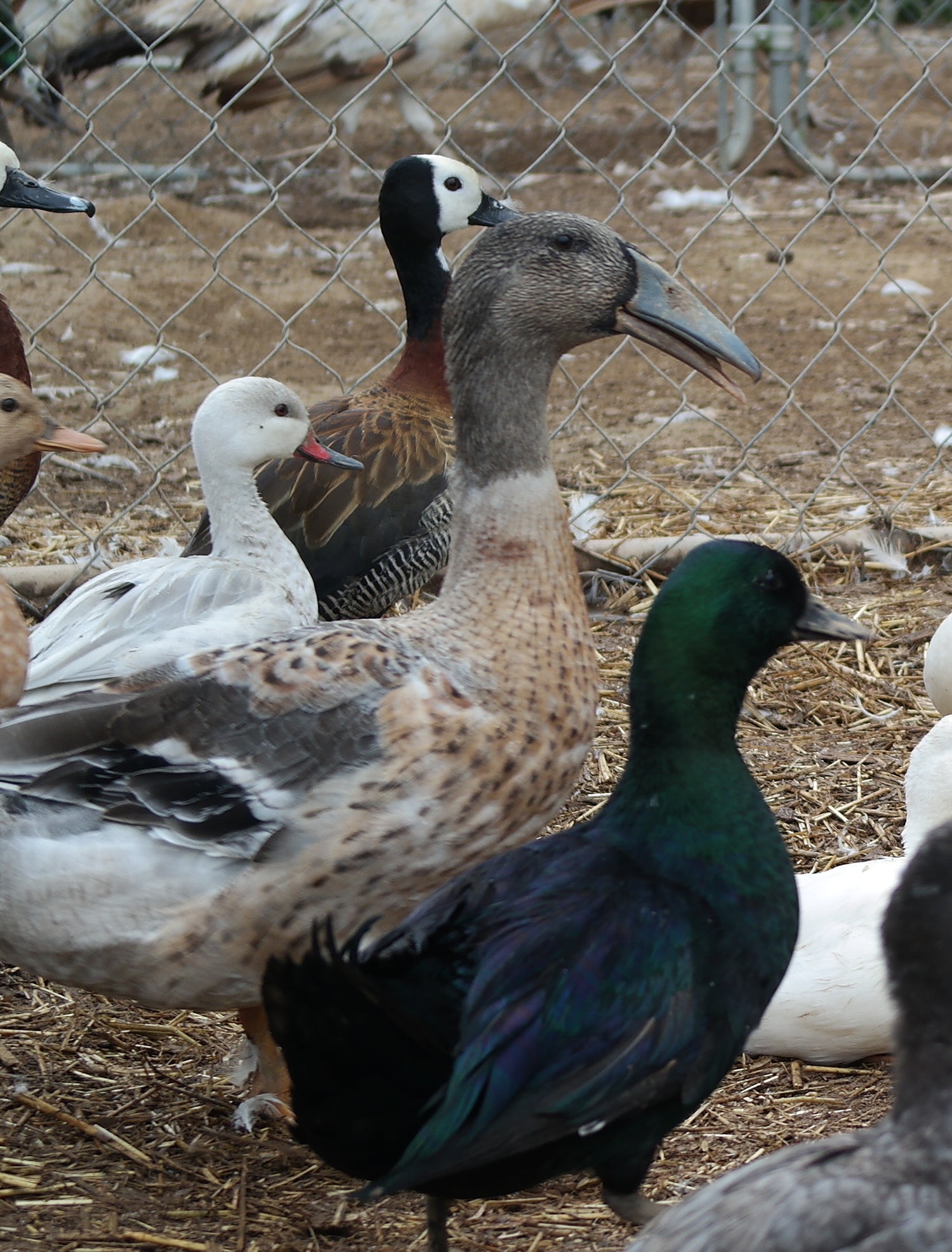
Dutch Hookbill
The rarest duck in the world. With fewer than two thousand breeding adults worldwide, the Dutch Hookbill is critically endangered. Although once a common bird, pollution of waterways and loss of market favor triggered abrupt decline. We love these ducks, and we know you will too. They are easy to raise, phenomenal foragers, and full of personality.
Dutch Hookbill Colors
-

Dusky
Drakes have brilliant emerald-green heads and pretty bluish-gray bodies; females are
dark cocoa-brown with gold lacing and penciling. -

Golden Dusky
Soften golden hues; exceptionally rare color, especially in drakes.
-

White
Genotype is recessive white, which hides all other color genes. When Whites are bred to colored birds, 50 to 100% of the offspring can be colored, and there can be some beautiful surprises.
-

Blue
Hookbills with any extended black pigment are very rare. From this drake, it is possible to recover the extinct black variety!
-

Trout
Genotype is wild pattern plus light. Brilliant, high contrast plumage; females have eye-catching creamy white facial stripe and heavily spotted bodies. Bright, high contrast colors in both genders. An ancient and now extremely rare color in Hookbills.
-

Golden Trout
An ancient and now extremely rare color in Hook Bills. A frosted, pastel version of the wild Gray pattern.
-

Aleutian
Genotype is dusky and light. Bright rich colors; females are fawn with bold polka dot-like dark spotting. Bright colored males with modified wild pattern.
-

Snowy
Spectacularly brilliant-colored drakes and lovely frosted hens.
-

Golden Sepia
Genotype is wild pattern and brown. Same plumage patterns as the Grays, but in lovely soft hues. Exceptionally rare, especially in males.
-

Bibbed Snowy
Rare sub-variety of Snowy, displaying a White Bib on chest.
-

Grey
Genotype is original wild color. Brilliant-colored males, delicately penciled and laced camouflaged females. All of the varieties are derived from the Grays. They can be bred to any color variety with excellent results. Now a very rare color in Hookbills.











